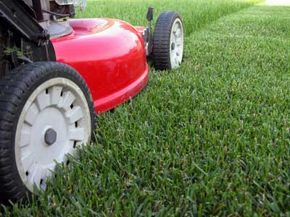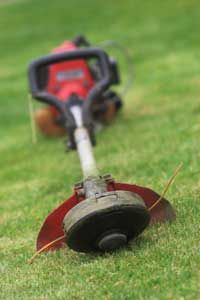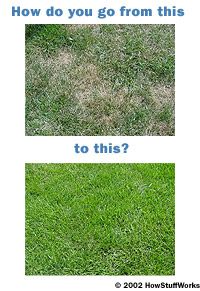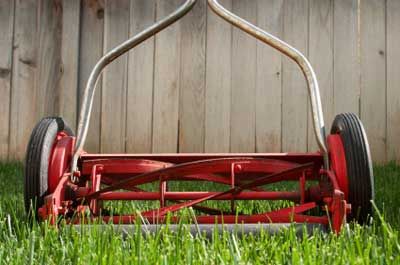Know the Type of Grass
When deciding how to go about mowing a lawn, it's important to know exactly what kind of grass seed you have. Different grass plants thrive at different cutting heights, and you're going to want to adjust your lawn mower to accommodate your lawn. If left high enough, grass blades will grow healthier root systems, and their own shading will help them preserve moisture. When in doubt, err on the side of cutting too high, and avoid trimming more than one-third the height of a grass blade.
How Often Should You Mow the Lawn?
Once you know how much to cut, the next question is mowing frequency. If the lawn isn't growing above its cut length due to drought or cold weather, then mowing isn't necessary. Otherwise, experts recommend regular mowing. Weekly mowings are probably best if grass grows quickly due to abundant rain or if your mower struggles with higher grasses.
Use the Right Equipment
Next, make sure you have the right equipment. Yard size is the main deciding factor in choosing your tools. If you have 8,000 square feet (about 743 square meters) or less, approximately 0.18 acres, then a manual reel mower may be the best choice [source: Reel Mower Guide]. These simple, powerless mowers cut grass by rolling it through a spinning cylinder to a cutting bar. Electric, gas-powered and tractor-pulled variants are also available. Learn how a reel mower trims grass by reading How Reel Mowers Work.
For larger lawns or high grasses, gas-powered rotary mowers may be the best option. These mowers use spinning, fan-like blades to tear off the tops of plants. These tools are available as both push mowers and riding lawn mowers. Gas mowers require more maintenance than reel mowers and contribute to air pollution, but they also boast additional benefits. High grasses and debris don't slow these mowers, and many models boast a mulching feature. Grass clippings are full of nutrients and, if chopped into mulch, your yard can absorb them. Clumps left to sit on the yard's surface, however, can smother grasses by shielding them from necessary sunlight.
When it comes time to mow the trim, you may need additional tools and equipment. After all, you can't do all the painting in your home with a paint roller, as tight corners and delicate areas require the use of smaller brushes. The same is true of lawn mowing. To trim the grass around structures or in delicate areas of the yard, you can't use a riding lawn mower. You'll likely have to use manual clippers or an electric weed trimmer. Weed eaters are available in both gas- and electric-powered models.
Once you have the tools, it's time to get to work. Read the safety tips and strategic advice about how to properly mow your lawn on the next page.



